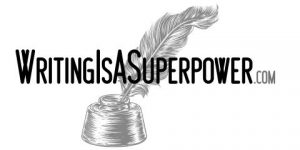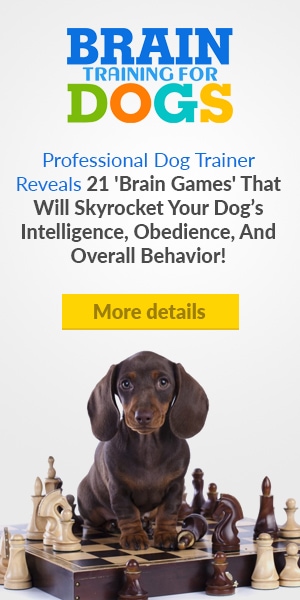
I’m convinced copywriting is the most valuable skill anyone can learn.
Copywriting is different from other forms of writing because it asks the target audience to do something, such as buy a product, call a phone number, complete a form, or click a button.
Copywriting is persuasive writing, and persuasion is a powerful skill that can pay dividends every day.
Copywriting skills are so powerful they can dramatically improve every area of your life.
When you can persuade others with your words, you step into a world of infinite possibilities where you can earn more, enjoy more, and be more.
If you know how to write a complete sentence, you already have the foundation to be a successful copywriter. You just need to add specific copywriting skills to your tool kit.
Inside the FREE Copywriting Course, Part 1.
Part 1 of the Free Copywriting Course includes;
- What is Copywriting.
- Your Job as a Copywriter.
- Power Words.
- Copywriting is Seduction.
- Inclusive Language.
- Make Love. Not War.
- What’s In It For Me?
- Features and Benefits.
- So What?
- Deeper Benefits
The Secret to Quickly Mastering Copywriting.
I’ve intentionally kept this training as brief as possible. Copywriting is a simple craft with few rules. However, the application of the things you learn here is infinite.
Plus, the earning potential is extraordinary.
However, you won’t gain these skills by just reading through this course. You must participate and make this knowledge your own.
To help you begin earning as quickly as possible, I’ve included links to sales pages and videos that demonstrate the point of each lesson. Bookmark these sales pages and videos to refer to later.
They can save you a lot of time and effort when you’re writing copy.
Some of these sales pages are stellar examples of solid copywriting principles. Others are disappointing examples of what NOT to do. Even the worst sales pages will help you write better copy.
And some of the sales pages you will visit are legendary examples of masters at work. They are part of copywriting history.
In this course, I focus on sales pages because they concisely show all the elements of effective copy. However, the principles you learn here are applicable to all forms of persuasive writing.
When prompted to visit a sales page, read the entire page, and watch the video from beginning to end. Have a notebook handy to record words and phrases you can use in your own writing.
Through repeated exposure to good copywriting, you’ll develop an intuitive understanding of what works and what doesn’t.
In the beginning, reading sales pages and viewing sales videos is the easiest way to become familiar with the craft.

Don’t Buy an Expensive Course.
There’s no reason to buy expensive copywriting training, at least not in the beginning. At the end of this course, you’ll have access to several resources, including recommended books and affordable advanced training.
In this free copywriting course, I show you everything you need to know to launch a lucrative copywriting career. You won’t find a better copywriting course for free anywhere else.
Please don’t be fooled by the brevity of this training. Take it all in and make it your own. Once you do, you’ll have a rock-solid foundation for building a very lucrative career.
It’s a Puzzle.
Think about writing copy as a puzzle, a puzzle where you must first create the pieces before you put it together.
The mechanics of copywriting are simple and straightforward. The challenge you will face as a copywriter is determining how to best appeal to your target audience.
In Part 3 of the Free Copywriting Course, I show how.
In the following sections, I discuss the pieces to the copywriting puzzle. Then, I show you how to put them together using proven copywriting formulas.
When you finish this free copywriting course, you’ll have the tools and confidence to write dazzling sales copy. Plus, you’ll know how to continue to grow as a copywriter.
Anyway You Look at It, You Win.
If you have an online business, the skills you learn here can boost your conversions. If you’re a writer and want to earn a professional’s income while working from home, this course will show you how.
The demand for copywriters has never been higher. If you love to write and you’re looking for a new career, copywriting is an excellent choice.
However, please understand, there’s nothing magical about copywriting, and it’s certainly not a way to get rich quick.
I can only show you the skills and point the way toward success.
You must make these skills your own by completing the assignments, studying the sales pages linked in this training, and writing practice copywriting projects.

What is Copywriting?
Copywriting is sales. It’s a marketing tool. It’s the practice of using words to sell things. For an online business without a physical shop, copywriting is the only way to get people’s attention.
Copywriting might sell a product, service, charity, idea, brand, celebrity, or political candidate.
At its most basic level, copywriting inspires the target audience to take a specific action, such as buying a product or service, clicking a button, filling out a form, making a donation, or casting a vote.
Copywriting isn’t literature, it’s not teaching, it’s not entertainment, and it’s not painfully perfect writing like you may have learned in school.
A prospective customer does not want to be taught or entertained by your copy. They want your copy to help them solve a problem or fulfill a desire.
Your Job as a Copywriter.
Once you realize that your job as a copywriter is to solve a problem or fulfill a need for the prospect, your job gets much easier.
You don’t need to be a literary savant to succeed as a copywriter. All you need is the ability to understand the audience you’re writing for and the skills to persuade them.
That is what you’ll learn to do in this free copywriting course.
Changing How People Behave with Your Words.
In real life, you may have realized you can say just about anything if you smile as you say it. It’s all about the presentation.
The way you present your words changes how people act. Copywriting is about offering words in the most persuasive manner possible.
Do it right, and they’ll take the action you want them to, such as clicking a button, opening an email, or making a purchase.
Do it wrong, and your prospect won’t read past the headline.
Keep It Simple.
You can find a lot of information online about copywriting.
If you’re the sort of person who likes to study something to death before you apply it, you could be studying copywriting for a very, very long time.
That isn’t necessary.
Copywriting is a straightforward process. If you know how to write, you already have 90% of the necessary skills.
Beyond fundamental writing skills, all you need are a few copywriting methods and strategies.
With consistent effort, you’ll become confident you can tackle any copywriting job that’s thrown your way. You’ll write faster and more efficiently too, and you’ll earn more.

Human Automatic Action.
Earlier, I wrote that copywriting is a marketing tool. Specifically, copywriting is sales and sales is the art of persuasion. As a copywriter, you need to know that some words are more persuasive than others.
Some words are seductive.
For example, if a police officer says you’re going to the station for an interrogation, you might get defensive. You might even panic and try to run away.
However, but if the police officer instead invites you to join him for an interview, you’ll probably be more cooperative.
In the copywriting profession, some especially seductive words. We call these words “power words.”
Power words trigger an automatic human response and are proven to boost conversion rates.
“Free,” “secret,” and “discover” are well-known power words.
These words trigger an emotional response in the target audience and inspire them to take a specific action.
Because, Because, Because.
People like to have reasons for what they do.
An established principle of human behavior states that when we ask someone to do us a favor, we will succeed more often if we give them a reason why.
A Harvard human behavior study demonstrated this principle to be true. Indeed, most people will comply with a request for a reason, any reason.
The Harvard study asked to skip ahead of people standing in line to use a copy machine.
When the participant asked, “May I use the Xerox machine?” Only about 60% of those asked agreed to let the participant skip ahead of them.
However, when asked, “May I use the Xerox machine because I have to make some copies?” 93% let the tester skip ahead.
“Because” is a power word, it gives people a reason to act in a specific way.

Power Words and How to Use Them.
It’s usually easier to add power words at the end of the writing process. Write the copy first and then check the list of power words and add a few that fit the context of the sales message.
Be careful not to use too many power words. If overdone, power words can make copy read like hyperbole. You don’t want that.
Use power word to evoke a specific emotion in the target audience. Below you’ll find a partial listing of power words associated with an emotional response.
In Part 2 of the Free Copywriting Course, you’ll learn more about emotions and how to use power words to create an emotional experience for the target audience.
There are more comprehensive lists online. However, resist the temptation of possess every power word in the world. You only need a few. Find those that work for your niche.
For the most comprehensive list of power words and phrases, check out The Big Book of Words that Sell in the Recommended Copywriting Books Resource Area.
Often the best power words are those you find in published sales pages and videos.
Start a copywriting notebook, as you read sales letters and promotional materials, keep a list of the power words you find.
Power Words – Anger.
- Abuse
- Agitate
- Annoy
- Arrogant
- Ass kicking
- Broke
- Brutal
- Buffoon
- Bullshit
- Bully
- Evil
- Exploit
- Fear
- Foul
- Hostile
Power Words – Curiosity.
- Astonishing
- Banned
- Behind the scenes
- Blacklisted
- Censored
- Cringeworthy
- Dark
- Extraordinary
- Eye-opening
- Elusive
- Forbidden
- Invitation Only
- Members Only
- Off the record
- Private
- Restricted
- Secret
Power Words – Energy
- Amazing
- Audacity
- Blissful
- Breathtaking
- Courage
- Devoted
- Excited
- Fearless
- Grateful
- Grit
- Happy
- Heart
- Hero
- Jaw-dropping
- Jubilant
Power Words – Fear
- Agony
- Annihilate
- Armageddon
- Assault
- Beware
- Caution
- Corpse
- Crazy
- Cripple
- Fool
- Hazardous
- Jeopardy
- Looming
- Lunatic
- Meltdown
Power Words – Greed
- Bargain
- Best
- Billion
- Bonanza
- Discount
- Extra
- Fortune
- Free
- Freebie
- Frenzy
- Frugal
- Gift
- Jackpot
- Luxurious
- Money
Power Words – Lust
- Brazen
- Crave
- Depraved
- Dirty
- Exposed
- Hypnotic
- Lascivious
- Lick
- Lonely
- Naked
- Naughty
- Provocative
- Scandalous
- Sensual
- Sex
Power Words – Trust
- Anonymous
- Authentic
- Best-selling
- Certified
- Endorsed
- Guaranteed
- Ironclad
- Lifetime
- Moneyback
- No Obligation
- No Questions Asked
- No Risk
- Official
- Proven
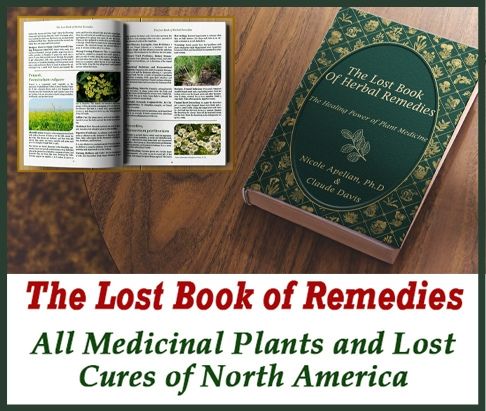
Real World Copy: Power Words
To help you conceptualize power words and how to use them, visit the sales page listed below by clicking on the link.
Can you find the power word in the title? What is it?
Watch the entire video and write down every power word you hear in your copywriting notebook. Note beside each power word you find the emotion it evokes.
Remember to bookmark the sales page for future reference. Watch the video now.
Click here to visit the sales page for this lesson: Lost Book of Remedies.
(Or, go to WritingisaSuperpower.com/LostRemedies)
Copywriting is Seduction.
Imagine you’re at a party and, from across the room, an attractive person approaches you. Your eyes meet, and you feel a flutter of excitement.
Suddenly the night is filled with endless possibilities.
But then, soon after a pleasant introduction, your new acquaintance begins endlessly talking about themself.
They say, “I have this,” and “I did that.” “It’s all about me, me, me!”
You listen politely for a moment, but your interest quickly fades. Suddenly, the night seems dismal. All hope is lost.
The more they prattle on, the more you look for an escape.
Eventually, you make an excuse to get away from that self-centered braggart.
Here’s the point of this innocent fantasy, copywriting is not bragging. No one likes a braggart.
Copywriting is seduction.
Imagine you’re at the same party. Across the room, you see a beautiful person who’s interested in you. Your eyes meet, and your heart does a little backflip.
They come closer and ask about you. While there’s a pleasant give and take in the conversation, the focus is on you. They CARE about YOU!
They listen to you, really listen, and for the first time in ages, you feel understood.
You turn your back to the party and lean in to be closer to your new friend. They slip closer to you too. An intimate space forms around you both as the drone of the party fades into the background.
You want the night to last forever.

Exclusive and Inclusive Language.
As a copywriter, when you use words like “we,” as in “We are the best in town,” you’re bragging. That’s exclusive language that psychologically locks the prospect out of the selling process.
When the prospect is outside looking in, they quickly lose interest.
On the other hand, when you use words like “you,” “you’ll get, you’ll find, and “you’ll feel” as in “You’ll feel the difference,” you are psychologically drawing in the prospect.
That’s inclusive language.
Make Love. Not War.
Some writers seem to believe that copywriting is a war where the customer is the enemy. In this way of thinking, making a sale means to dominate and defeat the customer.
Bullying or bamboozling the prospect into buying violates proven best practices of sales and marketing that have evolved over thousands of years.
Although bullying the customer into buying can work short-term, it is ultimately counterproductive. That kind of copy isn’t fun to write either.
Also, I suspect that if you build a career based on bully tactics, that attitude will negatively impact other relationships in your life as well, both personal and business.
In the early pages of his book, The Architecture of Persuasion, legendary copywriter and teacher, Michael Masterson, reminds us to love the customer.
The word “love” is open to interpretation. Late psychologist Carl Rogers described love as an “unconditional positive regard for another person.”
Roger’s also stated that unconditional positive regard would most likely lead to trust. In the selling process, trust is essential.
When you love your customer, your job as a copywriter becomes much easier, more enjoyable, and more lucrative.
Perhaps it’s karma.
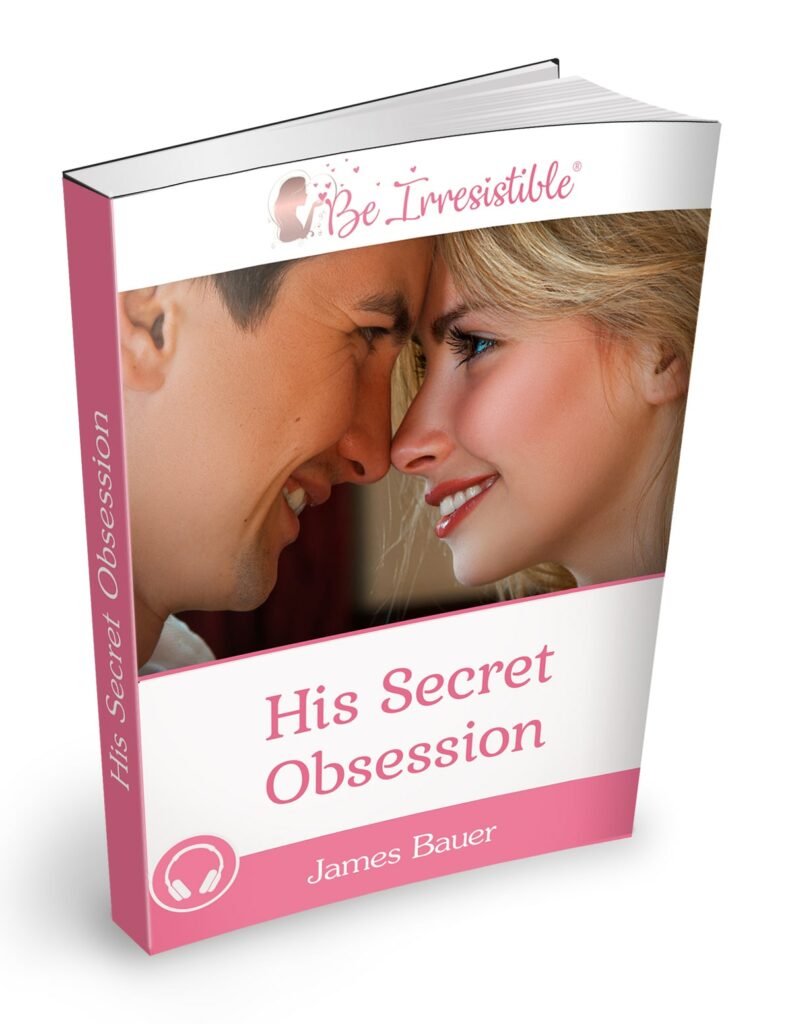
Real World Copy: Sincerity
To help you internalize how a writer’s love for the customer impacts the copy they write, visit the sales video linked below.
Pay close attention to how the sales video is sincere and truthful. Also, notice how the narrator clearly understands the prospect.
The video quickly addresses common problems women may have attracting and keeping a partner. Then it offers a solution based on proven psychological principles.
When you watch the entire video and continue through to the order page, you’ll see that, at every step, the narrator evokes care for the prospect.
Building on the previous lesson, remember to look for power words and to record them along with the emotion they evoke.
Bookmark the sales video for future reference. Watch the video now.
Click here to visit the sales page for this lesson: His Secret Obsession.
(Or, go to WritingisaSuperpower.com/HisSecretObsession)
It’s All About WIIFM.
From the moment a prospect first sees your copy, they think what’s in this for me?
How can I benefit? What can I get out of this? What’s in it for me? Aka WIIFM.
In most cases, the prospect isn’t consciously aware they are searching for the benefit in your copy. That’s just how we humans think.
We all do it. Our mind continually sorts through incoming data and stimulus and tosses out the stuff that doesn’t help us survive and thrive.
That’s why you, as a copywriter, must quickly show the prospect what your product or service can do for them.
When you put yourself in the shoes of your target audience and answer what’s personally in it for them, you become an infinitely better copywriter.
Any time you want to capture a reader’s attention and keep them engaged, show them what’s in it for them.

Real World Copy: WIIFM
To help you internalize the importance of WIIFM and how this principle is used in copywriting, visit the sales page linked below and watch the entire video.
The video opens with a compelling and emotional story. At about a minute into the video, we discover the WIIFM.
Building on what you learned in earlier lessons notice the sincere tone of the video and the use of power words.
Remember to write the power words you find in your notebook. Beside the the power word, write down the emotion associated with it.
Book the video for future reference. Watch the video now.
Click here to visit the sales page for this lesson: Resurge.
(Or go to WritingisaSuperpower.com/Resurge)
FREE Reminder.
In the previous sections, you discovered that anyone reading or viewing your copy will immediately ask themselves, “What’s in it for Me?”
And, you’ve seen examples of how some writers answer that question in their copy.
Because each lesson builds on the previous one, you must watch the videos linked in WIIFM in Action and Sincere Copy in Action before continuing.
If you haven’t watched the above sales videos yet, do it now.
Features and Benefits.
Now that you know the target audience asks, “What’s in it for me?” How do you answer that question?
Easy, you show them.
Another way to ask what’s in it for me is to ask, “How do I benefit?”
In other words, you, as a copywriter, must show the prospect the benefits of the product offer. You do this by turning the product features into benefits.
The prospect might think it’s cool that the Galactic Plasma Blaster you are selling fires full auto. Full auto is a product feature.
However, the prospect will buy your Blaster because it’ll keep them alive during the next alien invasion. Keeping body and soul together is a benefit.
You answer the prospective customer’s question of what’s in it for them by showing them the benefits.
But, how do you turn product features into benefits?
You turn product features into benefits by asking, “So what?” a lot.

Sell the Benefits.
Benefits help the prospect see the product in their life. On some level, they imagine owning it.
Turning product features into benefits is the difference between an inexperienced copywriter and a pro. Get this, and you’ll go to the head of the class and boost your earnings substantially.
Why does anyone buy anything? Do they want the product, or do they want the benefits of the product?
They want the benefits of the product, of course.
For example, a customer doesn’t buy a mattress because they want a mattress. They buy a mattress because they want a good night’s sleep and to wake up feeling refreshed.
They want the benefits of a mattress.
Your prospect doesn’t care about the features or technical specifications of your product.
They only care about what your product can do for them and the results they will get by using it.
Sell the results.
Note: Later in this free copywriting course, I’ll show you where the features come into the buying process, but for now, remember it’s all about the benefits.
Real World Copy: Sell the Benefit.
To help you internalize how essential it is that you sell the benefits of a product, visit the sales page linked below.
Notice how the primary benefit is stated at the top of the page and underlined.
Read the entire sales page and click through to the order form. You’ll see that the copy continually sells the benefit.
Also, note how the writer uses power words, writes in a friendly, sincere tone, and repeatedly tells the reader what’s in it for them.
Read the sales page now.
Click here to visit the sales page for this lesson: Brain Training for Dogs.
(Or, to to WritingisaSuperpower.com/BrainTrainingforDogs)
How to Turn Features into Benefits.
In this lesson, you’ll learn how to turn product features into benefits like a copywriting pro. You’ll also discover how to go deeper, so your copy emotionally triggers the prospect to buy.
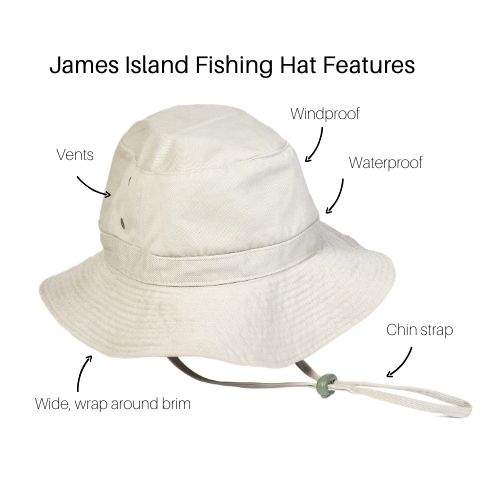
Look at the features listed in the hat image above. Write down one benefit of each one.
Below are the benefits I found. If your benefits are different, that’s okay. This brief exercise is just a warm up.
| FEATURE | BENEFIT |
| Vents | Keeps your head cool |
| Wide, wraparound brim | Protects face from rain and sun |
| Windproof | Helps to regulate body temperature |
| Waterproof | Sheds water and keeps your head dry |
| Adjustable chin strap | Stays in place in the heaviest winds |
The Brilliance of the “So What? Test.”
I first heard of the “So What? Test” from Clayton Makepeace, who uses it all the time in his copy. I encourage you to use it too. It’s a brilliant way to laser focus your writing.
In this exercise, we’ll use the “So What? Test” to turn product features into benefits.
Look again at the image of the fishing hat above. Vents are a feature. So What?
Your head stays cool when wearing the James Island Fishing Hat. A cool head is a benefit.
You try. List the features of the James Island Fishing Hat and ask yourself, “So what?” List a benefit for each feature.
James Island Fishing Hat Features
- Vents
- Wide wrap-around brim
- Windproof
- Waterproof
- Chinstrap
Use Features AND Benefits.
As you write copy, weave features and benefits together throughout the piece.
Because of the thought process, a prospect goes through as they consider making a purchase, showing both the benefit and features are critical.
With few exceptions, we humans buy things for emotional reasons and later justify our purchase with logic.
When you, as a copywriter, show the benefits of a product, you trigger the prospect’s emotions. When you show the features, you appeal to their logic.
By weaving features and benefits together, you activate the prospect’s emotions and trigger their desire to buy, while at the same time satisfying their need to justify the purchase.
Real World Copy: Features and Benefits
To see how professional copywriters weave features and benefits throughout their writing, go to Amazon.com and search for “electric toothbrushes.”
Read the product description of several electric toothbrushes, note how the writer weaves features and benefits together.
You’ll probably also see that some product descriptions do a better job of this than others.
Search other product categories.
How to Find Hidden Benefits.
Earlier, we explored obvious product benefits, but if we dig deeper, we can find hidden emotional benefits that compel the prospect to buy.
Hidden emotional benefits are the key to highly persuasive copy. To find them, we must dig a little deeper by subjecting the first benefits we discover to the “So what? Test.”
Real World Copy: A Deep Dive into Features and Benefits.
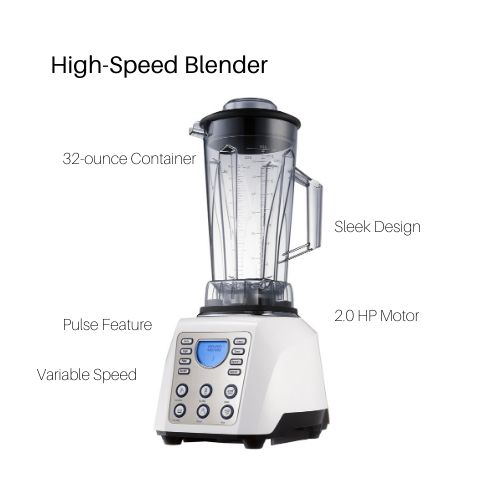
In this image of a high-speed blender, we see the features include:
- 32-ounce container
- Sleek Design
- 2.0 HP Motor
- Pulse Feature
- Variable Speed
If we ask, “So What?” for each feature, we might get a list of benefits that looks like this:
- Prepare more at once
- Looks good on the counter
- Quickly blend any whole food ingredient
- Combine smooth foods with chunkier foods
- Create every imaginable food texture
To get a deeper, more emotionally charged benefit, look at the above list and ask, so what?
- Save time preparing meals.
- Use it more because you see it on the counter.
- Easily eat healthy, nutrition-dense foods.
- Boost your health with a quickly prepared varied diet.
- Banish boring food and enjoy everything from delicious smoothies to crowed pleasing pâté.
And, you can go deeper still by applying the “So what? Test” to these benefits. Keep going.
Deeper benefits will suggest a theme for the copy. In the case of the high-speed blender, a health theme is emerging.
By continuing to dig for deeper, more emotionally charged, benefits, you’ll also find a primary benefit to sell to your prospect.
A deeper benefit is this blender will help you enjoy better health. And this may lead to a longer, disease-free, and joy-filled life.
The main benefit becomes the focal point of the copy and may suggest the headline as well.
Deeper benefits build a more compelling connection with the target audience and ties into their dreams and goals.
Key Copywriting Insight: Open every copywriting project with a deep emotional benefit. A deep emotional benefit is the most powerful technique for capturing and holding the attention of the target audience.
The Free Copywriting Course continues with Part 2 where you will learn the following:
- How to Inject Emotions into Your Copy.
- How to Show and Not Tell.
- How to Create a Customer Persona.
- How to Plan a Copywriting Project.
- How to Write a Killer Call to Action.
